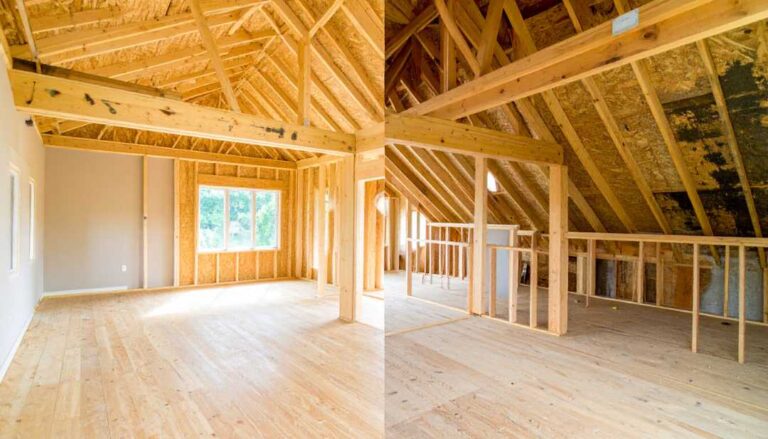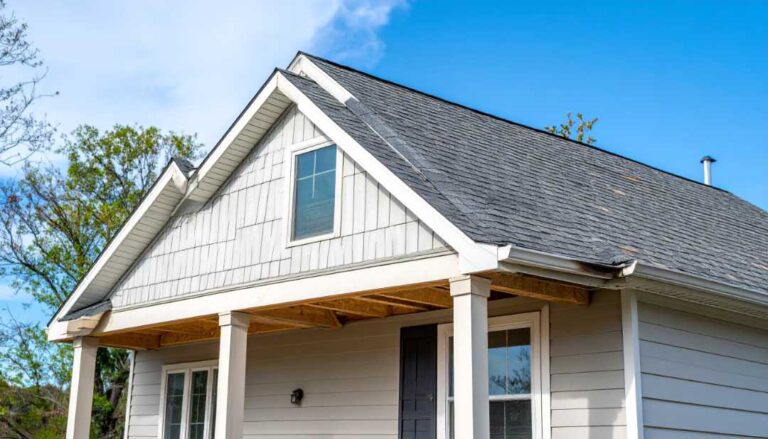As the vibrant colors of autumn begin to paint the Illinois landscape, signaling the end of long summer days, it’s also a clear reminder: winter is just around the corner. And while we might be dreaming of cozy nights by the fireplace and holiday gatherings, your home’s most vital defense against the harsh Illinois winter – your roof – needs maintenance now more than ever. Neglecting essential fall roofing maintenance is like inviting trouble to your doorstep. The freezing temperatures, heavy snowfall, ice dams, and strong winds that characterize our winters can exploit even the smallest vulnerabilities in your roofing system, leading to costly damage, interior leaks, and a whole lot of stress.
At Seidel Exterior Group, we’ve been helping Illinois homeowners protect their investments for years. We understand the unique challenges our local climate poses to roofing systems. That’s why we’ve put together this comprehensive Fall Roofing Maintenance Checklist, designed to empower you with the knowledge and actionable steps to prepare your roof for the rigors of winter. Think of this as your proactive guide to peace of mind, ensuring your home remains warm, dry, and secure when the snow starts to fly.
Why Fall is the Ideal Time for Roof Maintenance
You might wonder, why fall specifically? Several reasons make autumn the optimal season for your roofing tune-up:
- Moderate Temperatures: The mild fall weather is perfect for working on the roof. It’s not too hot, not too cold, and typically less rainy than spring.
- Preventative Action: Addressing minor issues now prevents them from escalating into major, expensive emergencies during the freezing months when repairs are more difficult and sometimes impossible.
- Debris Clearing: Fall brings falling leaves and twigs, which, if left on the roof or in gutters, can cause significant problems.
- Pre-Winter Assessment: It allows you to identify and fix any damage sustained during the summer storms before winter compounds them.
Don’t wait until the first snowflake falls or, worse, until you discover a leak. Let’s dive into your essential fall roofing maintenance checklist!
Your Essential Fall Roofing Maintenance Checklist:
1. Clear Gutters and Downspouts Thoroughly
This is perhaps the most crucial step you can take. Throughout the spring and summer, your gutters likely accumulated leaves, twigs, shingle granules, and other debris. Now, with autumn’s bounty of falling leaves, they’re at high risk of becoming completely clogged.
Why it’s critical for winter: Clogged gutters cannot properly channel rainwater and melting snow away from your home. When water has nowhere to go, it overflows, often cascading down your exterior walls, saturating your foundation, and potentially seeping into your basement or crawl space. More critically for your roof, standing water in clogged gutters can freeze, expand, and create ice dams along the edge of your roof. Ice dams force melting snow to back up under your shingles, leading to severe water damage inside your home, including stained ceilings, damaged insulation, and even compromised structural components.
Action Steps:
- Safely use a sturdy ladder (ensure it’s stable and extends above the roofline).
- Wear heavy-duty gloves to protect your hands from sharp debris and grime.
- Scoop out all leaves, twigs, dirt, and shingle granules. A small garden trowel or a gutter scoop can be helpful.
- Once cleared, flush the gutters with a garden hose to ensure water flows freely through the downspouts. Look for any blockages at the downspout exits.
- Consider installing gutter guards. While not completely maintenance-free, they significantly reduce the amount of debris that enters your gutters.
2. Inspect Shingles for Damage
A thorough visual inspection of your asphalt shingles is paramount. This can be done from the ground with a good pair of binoculars, or safely from a ladder if you’re comfortable and have proper safety equipment.
What to look for:
- Missing Shingles: High winds can lift and tear off shingles, leaving exposed areas vulnerable.
- Cracked or Broken Shingles: Shingles can crack due to age, extreme temperature fluctuations, or impact.
- Curling or Cupping Shingles: Edges lifting or buckling indicates the shingles are losing their protective properties and becoming brittle.
- Bald Spots or Excessive Granule Loss: Granules protect the asphalt from UV rays. If you see areas where granules are missing, the shingle is exposed to rapid deterioration. Check your downspouts and yard for accumulation of granules.
- Blistering: Small, raised bubbles on the shingle surface can indicate trapped moisture or poor manufacturing.
- Loose or Exposed Nails: Nails can back out over time, creating entry points for water.
Why it’s critical for winter: Even a small crack or missing shingle can allow melting snow and ice to penetrate the roof deck, leading to leaks, rot, and mold growth in your attic and home. Winter conditions exacerbate these issues, turning minor damage into major headaches.
Action Steps: Note any damaged areas. For minor issues like a few loose nails or a small patch of missing granules, you might consider DIY if you’re experienced. However, for significant damage, multiple missing shingles, or any signs of widespread deterioration, it’s best to call a professional.
3. Examine Flashing Around Chimneys, Vents, and Skylights
Flashing is the metal or composite material installed around penetrations in your roof (like chimneys, skylights, vents, and dormers) to create a watertight seal. It’s one of the most common areas for leaks.
What to look for:
- Cracked or Missing Caulk: Caulk can dry out, crack, and pull away over time, especially with temperature fluctuations.
- Rust or Corrosion: Metal flashing can rust, leading to holes and weaknesses.
- Bent or Loose Flashing: High winds can lift or bend flashing, breaking its seal.
- Gaps: Any visible gaps between the flashing and the roof surface or the penetration itself.
Why it’s critical for winter: Damaged flashing creates direct entry points for melting snow and ice. Water can easily seep underneath compromised flashing, leading to leaks around your chimney, in your attic, or around your light fixtures near skylights and vents.
Action Steps: Carefully inspect all flashing. If you notice minor cracking in caulk, it can sometimes be repaired with a high-quality, exterior-grade sealant. However, if the flashing itself is bent, rusted, or severely compromised, professional repair or replacement is usually necessary.
4. Check for Moss, Algae, and Lichen Growth
Dark streaks (algae), green patches (moss), or flaky growths (lichen) aren’t just an aesthetic problem; they can actively damage your roof.
Why it’s critical for winter:
- Moisture Retention: Moss and lichen act like sponges, holding moisture against your shingles, which can lead to premature deterioration and granule loss, especially with freeze-thaw cycles.
- Lifting Shingles: Moss and lichen can grow underneath shingles, lifting them and creating channels for water intrusion.
- Feeding on Shingles: Some growths feed on the limestone filler in asphalt shingles, further accelerating their breakdown.
Action Steps: While gentle cleaning solutions can remove these growths, power washing is NOT recommended as it can severely damage shingles. For extensive growth, consult with a roofing professional. They can recommend safe and effective treatment methods to protect your roof.
5. Inspect Attic for Leaks, Mold, and Proper Ventilation
This step involves going inside your home’s attic – an often-overlooked but crucial part of your roofing system’s health.
What to look for:
- Water Stains: Look for any water stains or discoloration on the underside of the roof deck or rafters. Even old stains indicate a past or ongoing leak that needs to be addressed.
- Mold or Mildew: Any fuzzy, discolored patches on wood or insulation point to moisture problems.
- Damp or Compressed Insulation: Wet insulation loses its R-value, making your home less energy-efficient.
- Pests: Signs of rodent or insect activity can sometimes indicate entry points through the roof or soffits.
- Ventilation Issues: Is your attic adequately vented? Poor ventilation leads to heat buildup in summer and moisture buildup in winter, both of which can shorten your roof’s lifespan and contribute to ice dams. Look for blocked soffit vents or insufficient roof vents.
Why it’s critical for winter: A healthy attic is key to a healthy roof. Leaks here will eventually lead to interior damage. Poor ventilation, especially in winter, causes warm, moist air from your home to rise into the attic, condense on the cold underside of your roof deck, and freeze. This contributes to rot, mold, and significantly increases the likelihood of severe ice dam formation, which can tear off gutters and damage roof edges.
Action Steps: Bring a flashlight and carefully inspect your entire attic space. If you find any signs of leaks, mold, or poor ventilation, contact Seidel Exterior Group immediately. These issues often require professional assessment and remediation.
6. Trim Overhanging Branches
Trees are beautiful, but overhanging branches can be a significant threat to your roof, especially in winter.
Why it’s critical for winter:
- Abrasion: Branches constantly rubbing against your shingles can wear down granules and even create holes.
- Falling Debris: Ice, snow, and strong winter winds can cause brittle branches to snap and fall, directly impacting and damaging your roof.
- Pest Access: Overhanging branches can act as a bridge for squirrels, raccoons, and other pests to access your roof and potentially your attic.
- Snow Accumulation: Branches can hold excessive snow against your roof, increasing the load and contributing to moisture issues.
Action Steps: Trim back any branches that are touching or overhanging your roof. Ideally, there should be at least 6-10 feet of clearance. If you have large branches or are uncomfortable working at heights, hire a professional arborist.
7. Schedule a Professional Roof Inspection (Highly Recommended!)
While this checklist empowers you to perform a basic visual inspection, there’s no substitute for the trained eye of a professional roofing contractor.
Why it’s critical for winter: A professional inspection by Seidel Exterior Group can:
- Identify Hidden Damage: We have the experience and tools to spot subtle issues you might miss, such as damaged underlayment, compromised decking, or flashing problems that aren’t immediately apparent.
- Assess Overall Roof Health: We can accurately gauge the remaining lifespan of your roof and advise on whether repairs are sufficient or if a replacement is on the horizon.
- Provide Expert Recommendations: We can offer tailored solutions for any issues found, from minor repairs to ventilation improvements or full roof replacement.
- Ensure Safety: Climbing onto a roof can be dangerous. Our professionals are trained and equipped to work safely.
Action Steps: Contact Seidel Exterior Group for a comprehensive, no-obligation fall roof inspection. We’ll provide you with a detailed report on your roof’s condition and recommend any necessary maintenance or repairs to prepare your Illinois home for winter.
Don’t Let Winter Catch You Off Guard!
Your roof is a significant investment and your home’s primary guardian against the elements. Taking the time for proactive fall roofing maintenance can save you from inconvenient leaks, expensive emergency repairs, and potential structural damage during the harsh Illinois winter.
At Seidel Exterior Group, we’re your local partners in roofing excellence. Our team is committed to providing top-quality roofing services, from meticulous inspections and precise repairs to complete roof replacements, all designed to stand up to the unique demands of the Illinois climate.
Be proactive, not reactive! By following this fall roofing maintenance checklist, you’re not just maintaining your roof; you’re protecting your entire home and ensuring your family’s comfort and safety throughout the winter months. Don’t wait for the first snowfall to realize your roof isn’t ready.
Contact Seidel Exterior Group today to schedule your comprehensive fall roof inspection and let us help you get your roof ready for winter – and for many more seasons to come. Your peace of mind is our priority!



